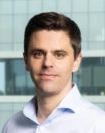In a bittersweet twist of fate, the climate crisis is now impacting one of life’s simple pleasures: desserts. The rising global cost of sugar, a key ingredient in cookies, candy, and other sweet treats, has soared to its highest level since 2011. This surge is attributed to a dry spell in India and a severe drought in Thailand, major sugar-exporting countries. As we grapple with 2023 being declared as the hottest year on record, the effects of climate change are becoming increasingly tangible, even on our dessert plates.
The Climatic Culprit Behind Rising Sugar Prices
India and Thailand, trailing only Brazil in sugar exports, have been hit hard by extreme weather conditions. India’s crops have been jeopardized by an intense dry spell, while Thailand faces a daunting drought. These events are direct consequences of the escalating global temperatures fueling such extreme weather phenomena, adversely affecting food yields, including sugar.

Consequently, this price hike is trickling down to consumer favorites like chocolates, sweets, and various desserts.

Impact on Consumer Goods and Global Markets
Consumers in the US experienced an 8.9% price increase for sugar and sweets in 2023, with a further 5.6% hike anticipated this year. These figures surpass historical averages, signaling a significant shift. Major brands like Cadbury, Oreos, and Toblerone, all under the umbrella of Mondelēz, have warned of impending price rises. Dirk Van de Put, CEO of Mondelēz, spoke candidly about the necessity of a “straightforward price increase” due to the soaring costs of sugar and cocoa.
However, Wagner cautions against oversimplifying the situation, acknowledging that large corporations often have complex reasons for price adjustments. Nevertheless, the underlying impact of climate change is undeniable and increasingly visible.
Broader Implications and Future Outlook
The concern extends beyond mere price hikes. The potential imposition of export limits by sugar-producing countries, aiming to safeguard their stocks, and logistical bottlenecks in Brazilian ports compound the issue. Joseph Glauber, a senior research fellow at the International Food Policy Research Institute, expresses concern about the disproportionately severe impact on developing countries and subsistence farmers.
“The issue will be affordability,” says Glauber. In wealthier nations, the cost increase may strain household budgets, particularly those of poorer families. However, the situation is dire in countries where a significant portion of expenditures is on food.

Adapting to a Changing Climate
Studies reveal that global heating will impede the ability of countries like China to maintain current rice production levels, with corn production potentially plunging 24% by 2030. Conversely, some crops like wheat might benefit in regions like Russia and Canada, where current climatic conditions are unfavorable for their cultivation.
The European Central Bank’s working paper from last year predicts a potential worldwide food inflation rate of up to 3% annually by the 2030s if significant adaptive measures are not implemented.
A Wake-Up Call
Wagner warns of the need to revise our food production assumptions. “Our food crops are basically optimized for how the weather has been for the last 10,000 years – a relatively stable climate that we are now leaving,” he explains. This departure from the “Goldilocks” temperature range is expected to exert pressure on food availability and pricing.
Concern isn’t only for the rise in the cost of products like Oreos, but more so for consumers living on the edge and subsistence farmers. These individuals face the grim reality of having their lives and livelihoods devastated by the climate crisis.
More To Discover
- Fusion Energy: The Key to Completing the World’s Net Zero Mission, Says Industry Leader
- Greenwash Update: Checking In On Coca-Cola and Starbucks’ Previous Environmental Claims
- Will Shrinking Corn Plants By Two Feet Transform the American Corn Industry? It’s Possible!
- Climate Change vs. America’s $253 Billion Fishing Industry: Senate Hears From Experts
Conclusion
The sugar price shock serves as a stark reminder of the far-reaching implications of climate change. As we witness the transformation of our environment, the impact on global food systems and daily life becomes increasingly evident, even in something as simple as the cost of a sweet treat. The challenge now is to adapt and mitigate these effects, ensuring the sustainability of our food sources and the well-being of communities worldwide.




















